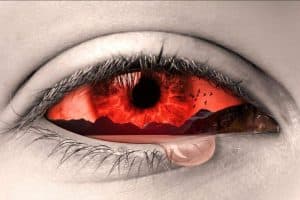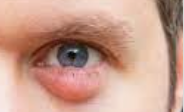Almost 60% of adults complain of dry or gritty eyes.
Gritty eyes are often a symptom of dry eye syndrome (DES), a common and treatable eye condition.
Whether your symptoms are chronic or episodic, there are a range of treatment options that can provide you with the relief you are searching for – so you can take your mind off your eyes and enjoy your quality of life.
What is dry eye syndrome?
Every time you blink, your tears spread across the surface of your eyes. Their presence in healthy proportions are essential for the hydration, nourishment and protection of the eye.
Dry eyes occur when the eyes cannot produce enough tears or the composition of the tear film isn’t properly balanced, impacting the quality of the tears.
This can result in any of the following symptoms:
- Gritty eyes
- Sore or red eyes
- Burning in the eyes
- Excessive tearing
- Blurred vision
- A feeling that something is stuck in the eye
What causes dry eye syndrome?
Dry eye syndrome can develop from a number of different causes, including:
- Genetics
- Aging
- Living in a polluted, dry or windy environment
- Insufficient blinking while using the computer
- Side effect of LASIK surgery
- Side effect of certain medical conditions or medications
However, the most common cause of DES is meibomian gland dysfunction.
SEE RELATED: Dry Eyes: Top 6 FAQs on Effective In-Office Treatments
If you suffer with any of the above, consult with an eye doctor near you to find out how you can get the relief you are looking for.
What is meibomian gland dysfunction?
Meibomian gland dysfunction (MGD) is the leading cause of dry eyes, that occurs when the meibomian glands in the eyelids don’t produce enough oil for the tears.
A clinical paper published in Cornea (June 2016) found that of 233 adults, 59% showed at least one symptom of MGD.
This condition occurs when the oil glands in the eyelid margins become blocked with thick secretions. This then prevents a normal flow of oil and leads to a reduced quantity. The oil that successfully flows through the glands can be crusty or poor in quality and may cause irritation.
When MGD becomes a chronic problem, permanent damage within the tear film can occur, as well as dry eye syndrome.
What can I do to relieve gritty eyes?
Mild dry eyes can often be alleviated with over-the-counter artificial tears eye drops or gels.
These lubricating solutions provide instant relief by increasing the moisture in the eyes. However, their results are not usually long lasting, so you may need to reapply as needed, throughout the day.
Making some lifestyle changes can also help to reduce your symptoms.
Some of these ‘eye healthy’ habits may include:
- Staying hydrated
- Using a humidifier in your home and office
- Blinking more frequently
- Wearing wrap-around sunglasses
- Including omega-3 in your diet
But, if you are looking for a long term solution for chronic dry eye, it is important to determine the root cause of your symptoms, which is only accomplished with a comprehensive eye exam and dry eye assessment.
Once a diagnosis is made, your eye doctor will discuss the most effective treatment for your condition, which may involve an in-office dry eye treatment.
What is an in-office dry eye treatment?
In-office DES treatments treat dry eye at its root, namely: blocked oil glands in your eyelids, inflammation around the eyes and bacterial infections.
These treatments can include devices that deliver:
- Pulsed laser
- Radio-frequency
- Intense steam heating
- Massaging of the eyelids
LEARN MORE: Guide to Dry Eye
If dry eyes are impacting your lifestyle, consult with an eye doctor near you to discuss the range of effective treatments.
Gritty eyes are often a symptom of dry eye syndrome (DES), a common and treatable eye condition.
Fortunately, there are a range of treatment options that can provide you with the relief you are searching for— so you can take your mind off your eyes and enjoy your quality of life.









